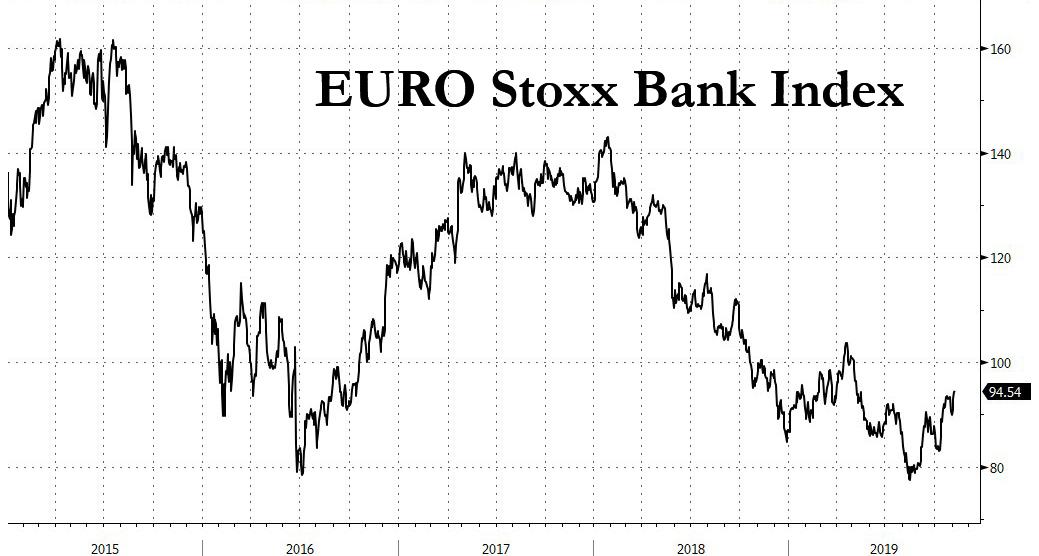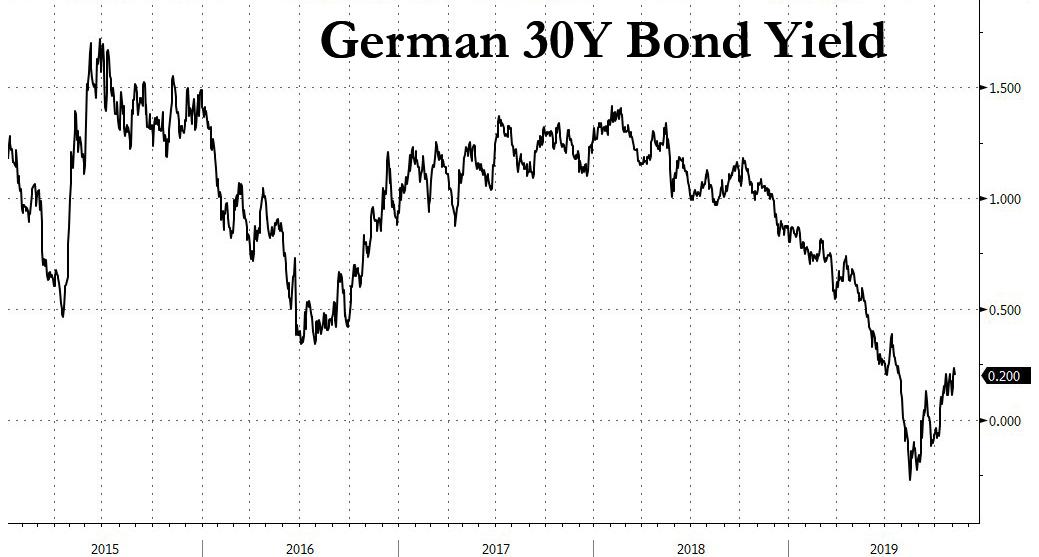Chaos Theory gets a bum wrap, and I think the reason is bad branding. The most common explanation of the phenomenon is the classic “a butterfly flapping its wings in Thailand can cause a hurricane in the Gulf of Mexico”. Initial conditions, in other words, can have outsized effects in complex systems like weather patterns. Fair enough, but one usually associates Chaos Theory with bad outcomes like cyclones and stock market crashes.
What about when initial conditions push their way through to create unexpectedly good outcomes? That’s
Turning to the current sunny spell in global risk markets, three examples of why Chaos Theory can work
Exhibit #1: European Bank Stocks:
In early August, the EURO STOXX Banks Index looked like it was about to implode. At 77, it had not been lower since the 1990s. We wrote about it, highlighting that several market bears thought the group was destined to go into
But then the group found its footing as Eurozone long-term interest rates bottomed (more on that in a minute).
From August 15th to now, the index is up 20%. Disaster averted, at least for now.
The group’s move has lit a fire under global bank stocks. US large cap Financials are up 12% since mid August. Small caps are +8% and Japanese banks are +14%.
Here is a 5-year chart of the index to give you some historical perspective:
Bottom line: European banks are the Lake Victoria of the current rally in global
Exhibit #2: German 30-year sovereign bonds:
Since the German government runs a balanced budget, long-term
Along with that, the long duration of German 30-years makes this asset singularly twitchy to market sentiment about Eurozone economic growth.
At the end of August, when US-China trade talks were at their nadir, the market for 30-year
Now, the yield on 30-year
Here is a 5-year yield chart for this paper:
Bottom line: the lift in long-term German yields since late August was the spark that reignited the global market’s animal spirits in September and October. Europe may be teetering on the edge of recession, but lessening US-China trade tensions may save it from falling into too deep a hole.
Exhibit #3: The offshore yuan/dollar exchange rate:
When the offshore yuan blew through the old “line in the sand” level of 7/$ in early August, you knew
These reached their peak in early September, at 7.19/$.
Since then, the yuan has crawled its way back to (almost) 7.0, closing today at 7.03.
Here is a 1-year chart for the offshore yuan:
Bottom line: even if US-China trade talks seem unpredictable, yuan traders are expressing confidence that they remain on the right track. That feeds into global capital markets’ bullish tone just now.
In summary, these are the 3 butterflies of the current global equity rally, each flapping their wings on distant
- Source, Zero Hedge


